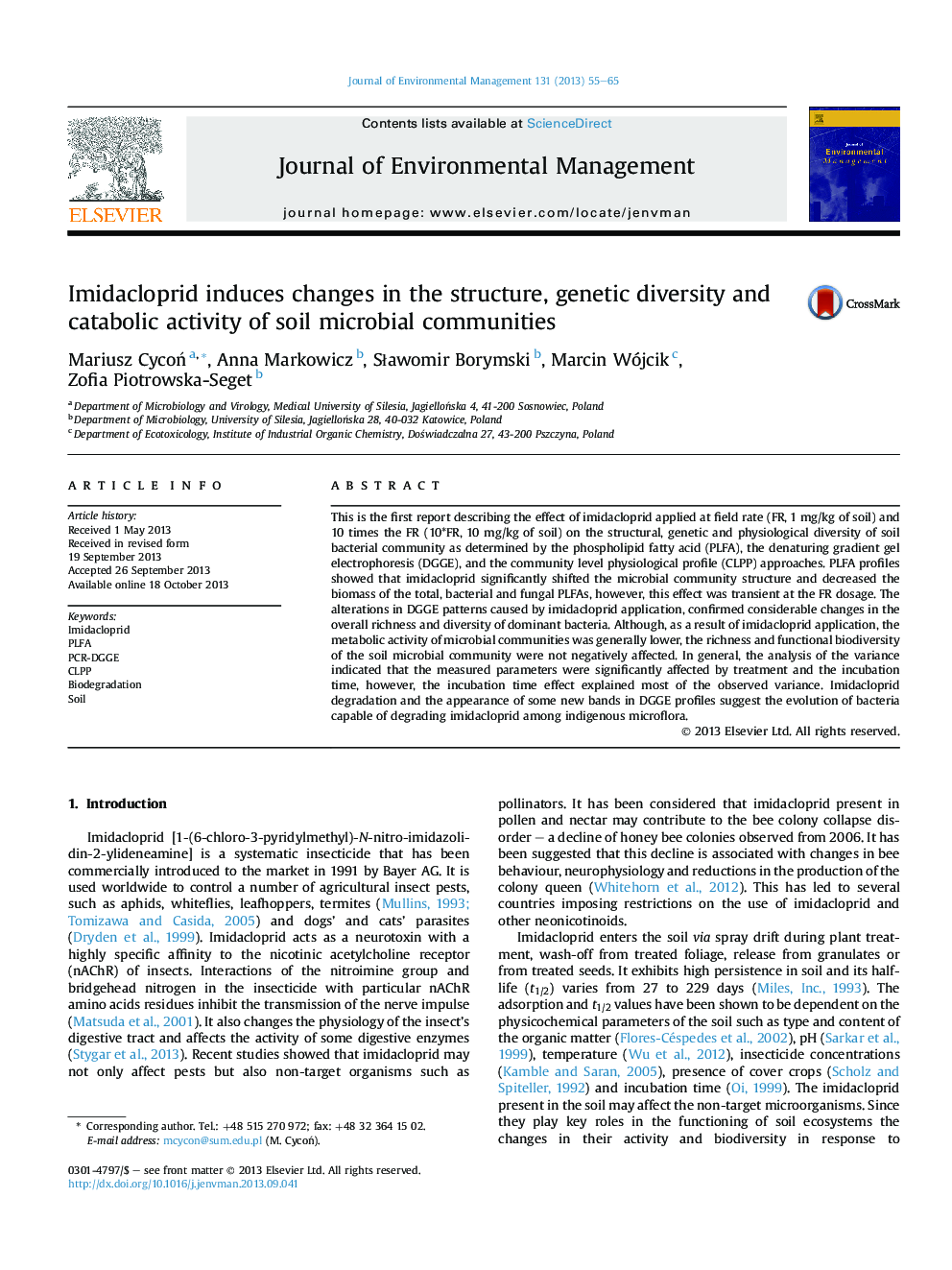| Article ID | Journal | Published Year | Pages | File Type |
|---|---|---|---|---|
| 1055934 | Journal of Environmental Management | 2013 | 11 Pages |
•Analyses of soil microbial community after imidacloprid application were performed.•PLFA pattern revealed alterations in the structure of the soil microbial community.•DGGE analysis showed changes in the overall richness and diversity of soil bacteria.•Imidacloprid negatively affected the metabolic activity of microbial communities.•Microbial degradation of imidacloprid was slow and depended on the dosage used.
This is the first report describing the effect of imidacloprid applied at field rate (FR, 1 mg/kg of soil) and 10 times the FR (10*FR, 10 mg/kg of soil) on the structural, genetic and physiological diversity of soil bacterial community as determined by the phospholipid fatty acid (PLFA), the denaturing gradient gel electrophoresis (DGGE), and the community level physiological profile (CLPP) approaches. PLFA profiles showed that imidacloprid significantly shifted the microbial community structure and decreased the biomass of the total, bacterial and fungal PLFAs, however, this effect was transient at the FR dosage. The alterations in DGGE patterns caused by imidacloprid application, confirmed considerable changes in the overall richness and diversity of dominant bacteria. Although, as a result of imidacloprid application, the metabolic activity of microbial communities was generally lower, the richness and functional biodiversity of the soil microbial community were not negatively affected. In general, the analysis of the variance indicated that the measured parameters were significantly affected by treatment and the incubation time, however, the incubation time effect explained most of the observed variance. Imidacloprid degradation and the appearance of some new bands in DGGE profiles suggest the evolution of bacteria capable of degrading imidacloprid among indigenous microflora.
